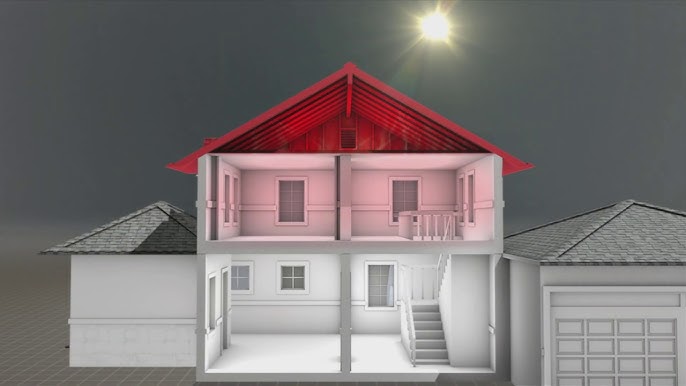Central Gas Furnace
This heating installation functions by heating the air and blowing it through the interior ductwork; it then enters the individual rooms and designated spaces. They can be fueled by either propane or natural gas.
Pros
Lower cost heating installation and repairs.Replacement is also cost-efficient as newer furnaces can generally adapt to any existing ductwork.
They heat the air evenly and there's quick distribution to the rooms.
Higher efficiency ratings and cheaper to operate.
Cons
Some units, typically the dinosaurs, lack energy efficiency.
*Some have noisy ductwork when operational.
*Allergens are easily spread throughout the house.
*(= conditions that can usually be remedied)
It can be a challenge to install ductwork if it isn't already in place.
Boiler Heating Installation
This heating system produces steam or hot water for heating purposes. This old heating technology typically makes use of radiators or baseboards.
Pros
Relatively quiet operation.
They have high energy efficiency, especially when there are individual controls for various rooms or zones.
They are conducive to maintaining good air quality and work well for those with impaired immune systems, asthma or allergies.
They also have a lower maintenance level because they have so few operable parts.
Cons
The heat radiates from the sides of the rooms.
The heated air moves far too slow and the ultimate distribution is very uneven.
This system also makes it difficult to make use of space because baseboards shouldn't be blocked by furniture.
Older-type radiators become very hot to the touch and can cause burns if they aren't properly covered.
Water leaks can eventually damage your furniture, your flooring and your home's structural integrity.
Portable Heater Installations
Portable Heater Installations like electric baseboards, electric fireplaces and infrared heaters convert electrical energy into heat.
Pros
They work for very small areas.
Cons
They are not suitable or economical for heating large rooms or entire structures. They are supported by electricity and even the most economical models can become costly to use on a prolonged basis.
Some locations have deemed them as unsafe and have banned their use. This is mostly due to the possibility of electrical wires overheating, shorting out and causing a fire.
Wall Heaters
Wall Heaters provide maximum heat output in select areas for a reduced amount of electric usage. These units are typically installed either into a wall or mounted on the wall exterior. An element heats up the surrounding air; the air is then distributed into the room with a fan.
Pros
They save floor space.
They create air circulation as the heated air moves to the top and cooler air is then drawn into the heater.
Simple installation. No ductwork or pipes are needed.
Inexpensive purchase; they sell for less than $100, making it a popular choice.
Eliminates the need for a central heating system if you don't want to heat every room in your home. It saves energy by not heating unused rooms or spaces.
Cons
Using electricity to run heating elements makes it very costly.
The actual energy efficiency is 50% or less.
They're more appropriate for supplemental heating applications than for use as primary heating units.
While the above article covers majority of heating options available when it comes to furnace installation, we would be happy to assist you with any specific questions you might have. Don't be left out in the cold. Put our experience and knowledge to work for you. Contact us today at (818) 341-3406. To learn more about services our company offers, please visit our homepage.






































